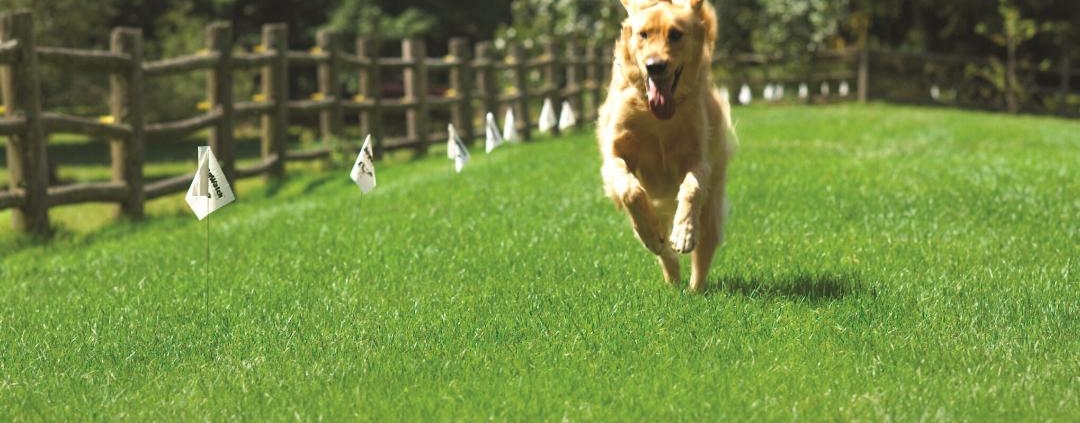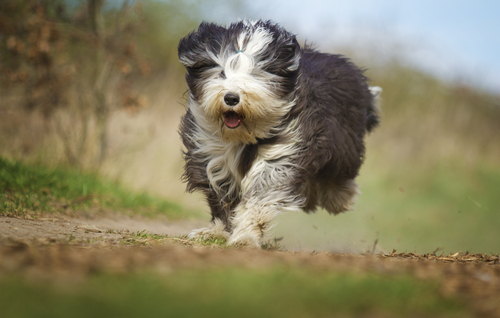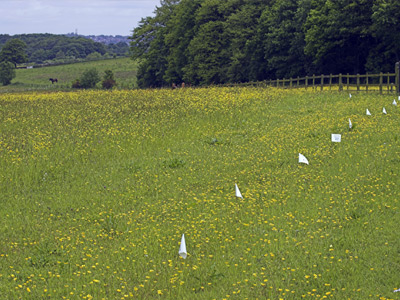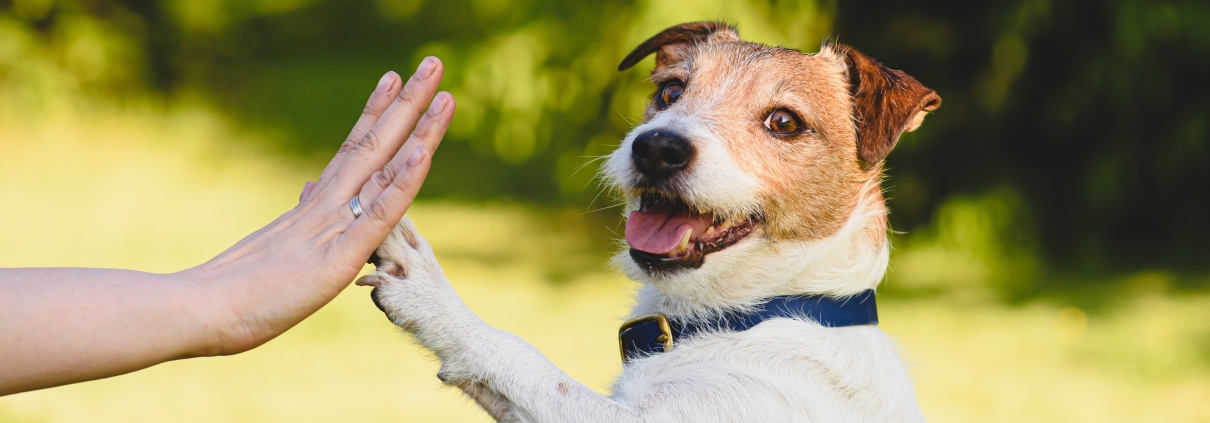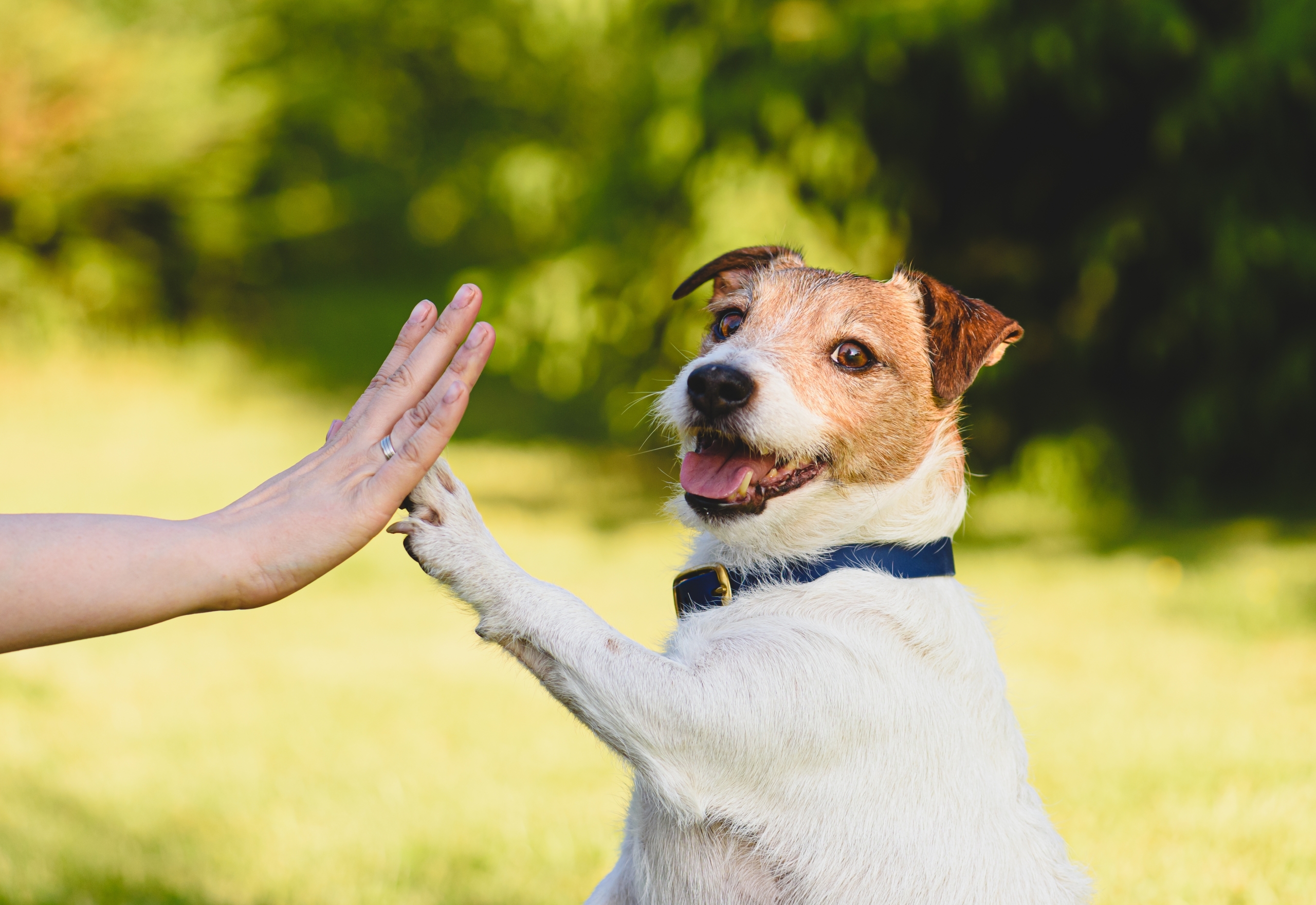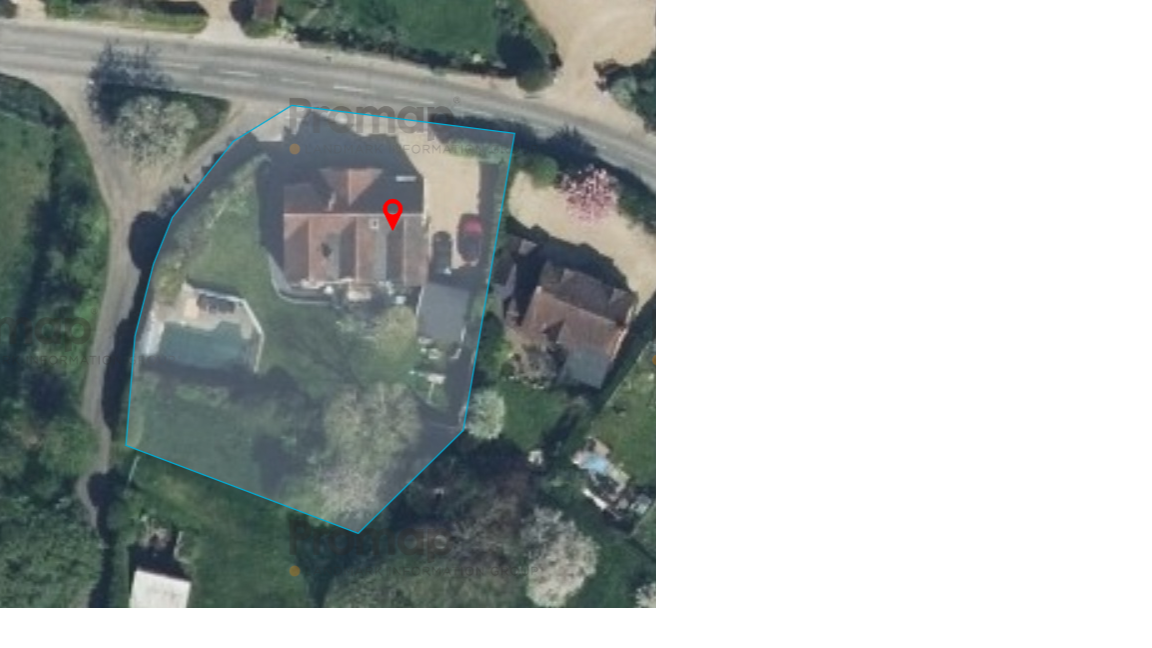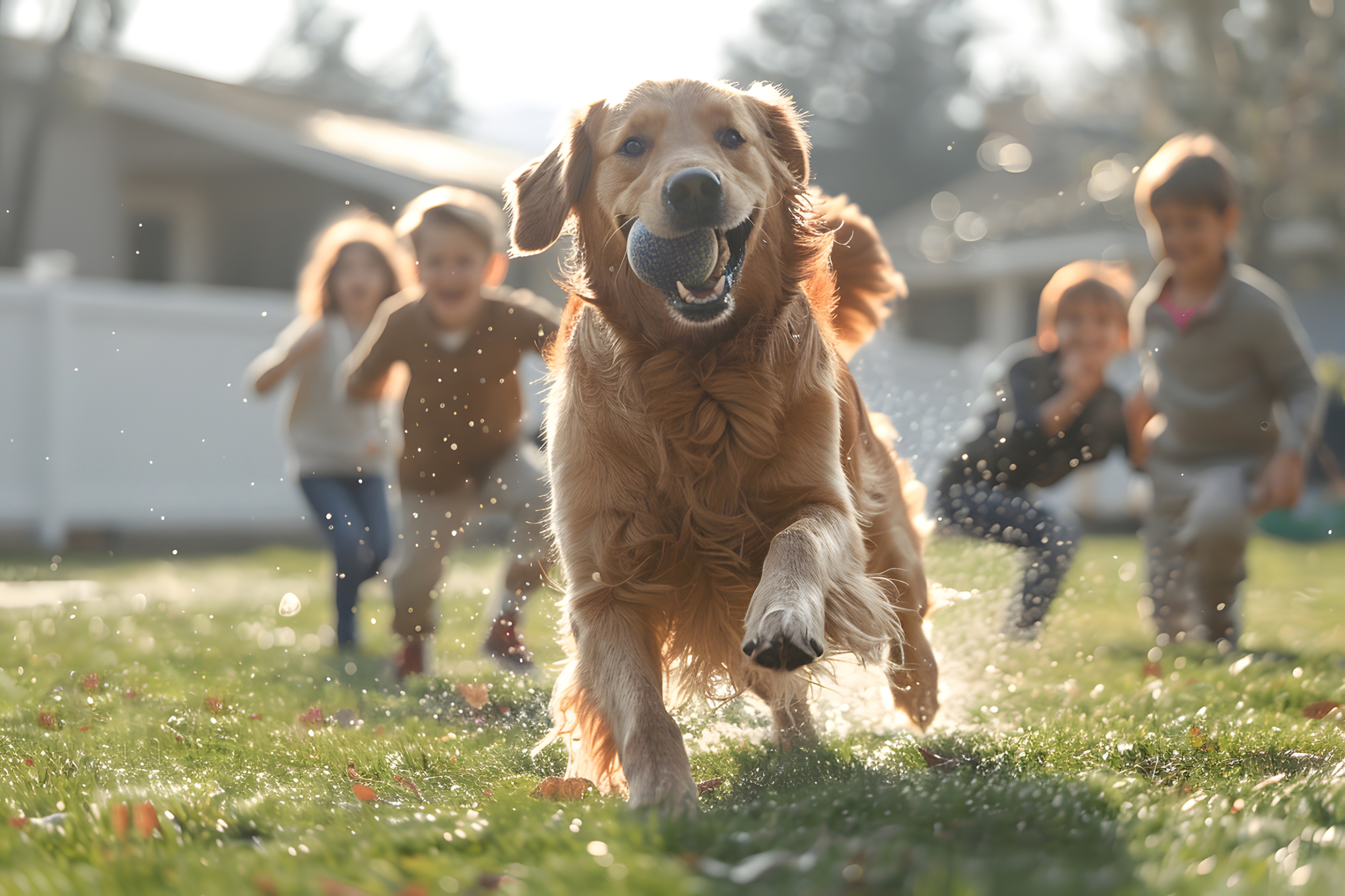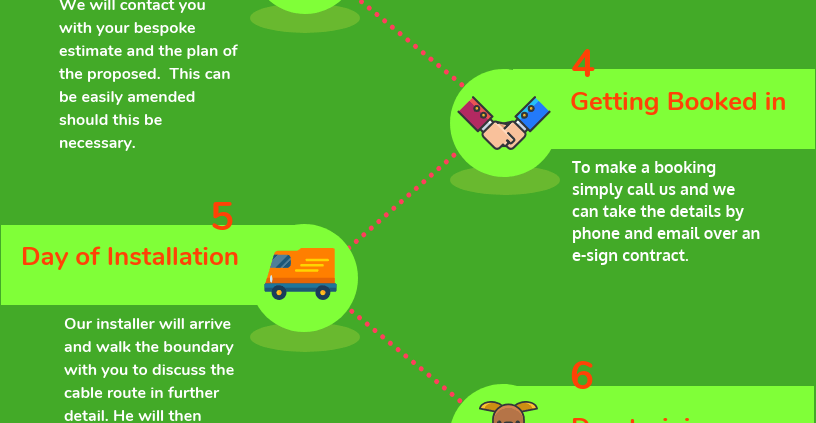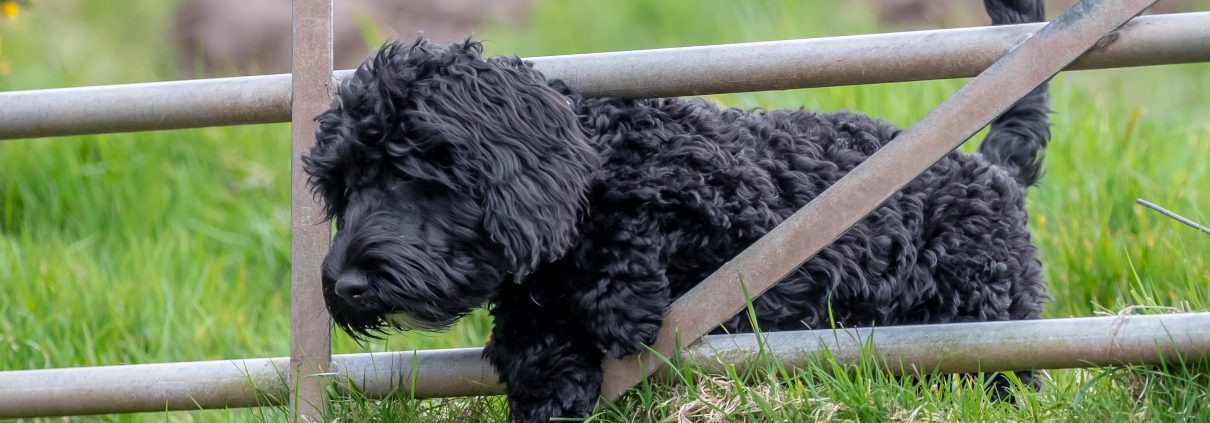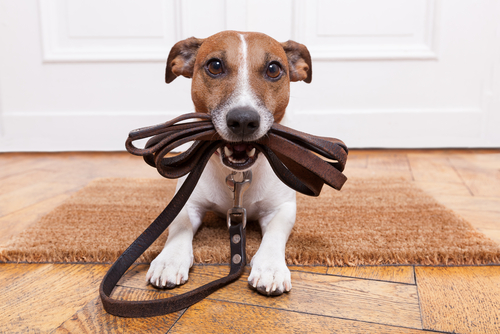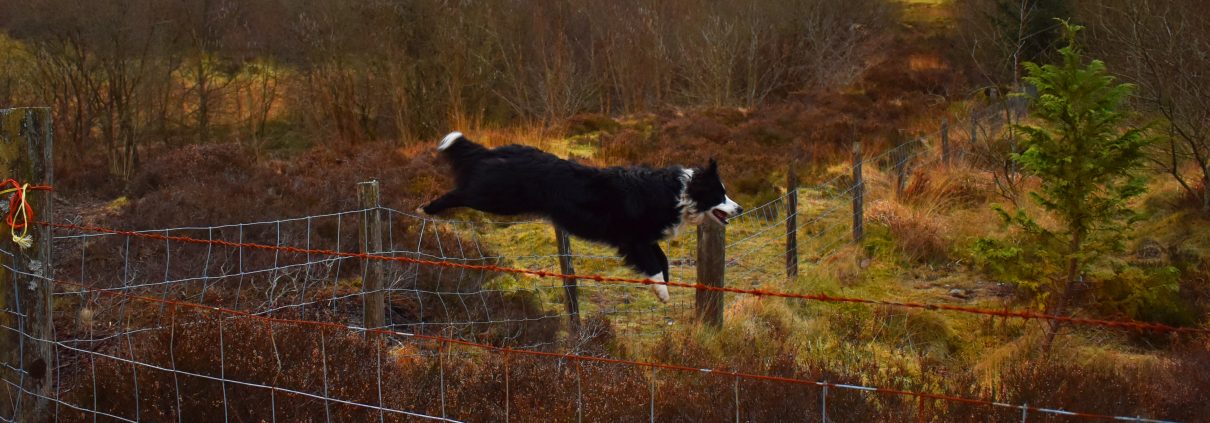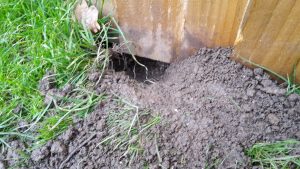Electronic Dog Fence Training Troubleshooting | DogFence UK
Overcoming Common Training Challenges with Your Electronic Dog Fence: An In-Depth Guide
At DogFence we know that training most dogs to confidently respect an electronic containment system is usually a smooth process, offering freedom and safety. However, like any training endeavour, if you encounter a few bumps with electronic dog fence training along the way, don’t worry! Many common challenges have straightforward, actionable solutions. This guide will help you understand, troubleshoot, and effectively resolve these issues, ensuring your furry friend thrives within their new, secure boundaries.
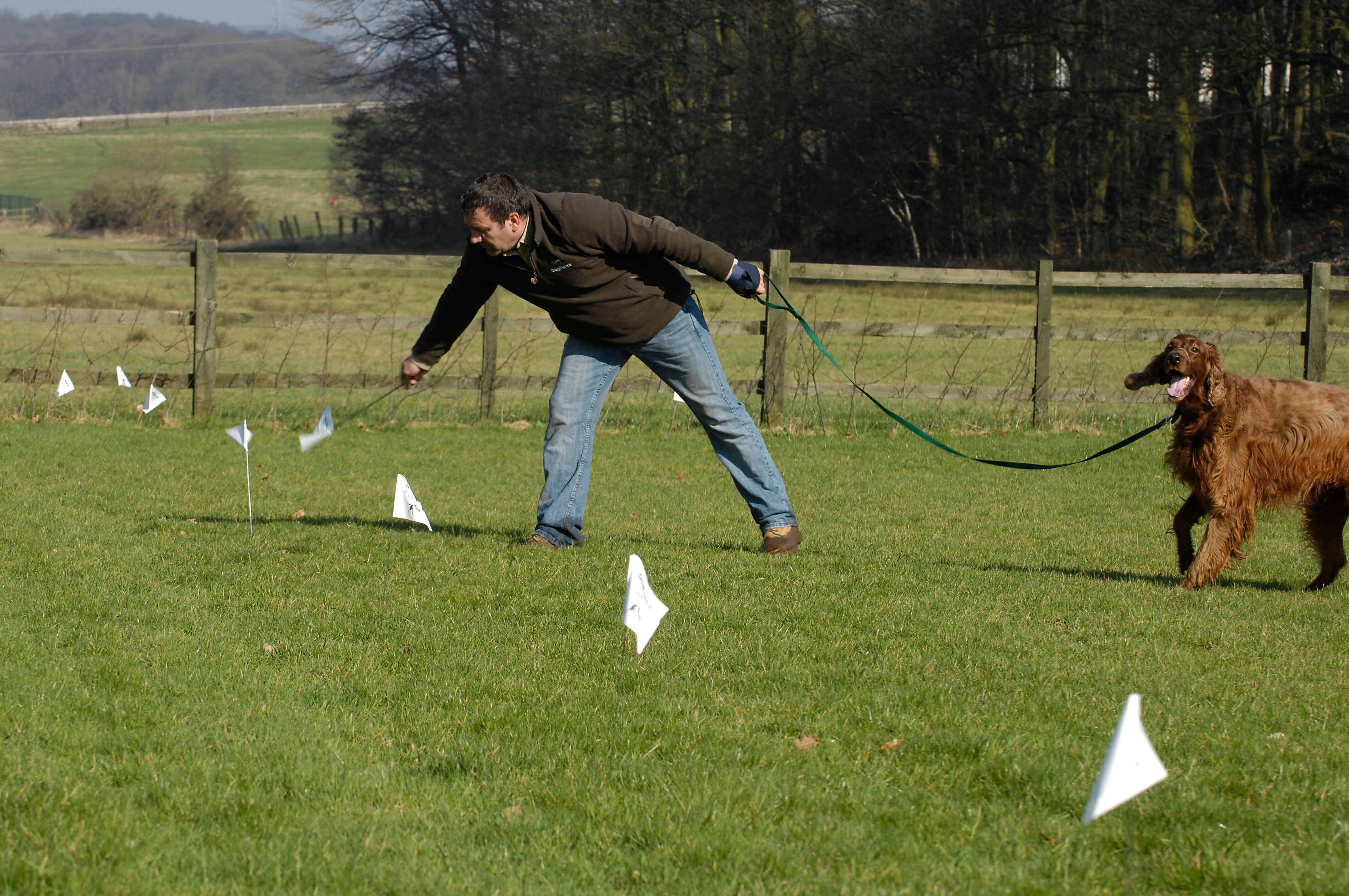
Training the dog using the training flags
Understanding the Basics of electronic dog fence training: Patience and Consistency are Non-Negotiable
Before diving into specific issues, it’s crucial to remember that successful electronic fence training hinges on two fundamental pillars: patience and consistency. Every dog is an individual and learns at their own pace. If you’ve been consistent with your initial training steps as outlined in your DogFence handbook, understanding the root cause behind a setback is the first and most critical step towards resolution. Rushing the process or being inconsistent can create confusion and undo progress.
Hitting a Snag: Common Training Problems and In-Depth Solutions
Even with the best intentions and diligent initial training, dogs can sometimes misunderstand the boundaries or react unexpectedly. Here’s how to address the most frequent and frustrating issues, along with detailed solutions:
Problem 1: My Dog Runs Through the Boundary!
This is perhaps the most common and concerning issue for any owner. It usually stems from one of three core reasons: a lack of understanding, overwhelming distraction, or a system issue.
1.1. Inconsistent Correction or Boundary Awareness
- The Problem: This is always a training issue. Your dog might not have fully grasped that the warning tone always precedes the impulse correction, or they haven’t firmly associated the tone and correction with the physical training flags. They might simply be testing the boundary’s limits and need further training. It could be that the collar is too lose, check the collar fit.
- The Solution: Back to Basics with Purpose: Go back to the very first stages of training. Re-establish short, highly supervised training sessions (5-10 minutes, 3-5 times a day). Walk your dog on a non-retractable lead (about 6-foot) directly to the boundary flags. As soon as they hear the warning tone, immediately and consistently guide them back into the safe zone, using a firm but calm “Careful!” command. Praise them lavishly only when they are back in the safe zone. Ensure the correction level is appropriate for your dog’s temperament and the collar fit is correct. For long-coated dogs ensure that the correct sized contact posts have been fitted (very important for thick-coated breeds like Huskies or Old English Sheepdogs).
- Actionable Tip: Reduce distractions during these “back to basics” sessions. Start in the quietest part of your garden before re-introducing any tempting elements. Use high-value treats to reward successful retreats from the boundary.
- Common Mistake: Owners often move too quickly past the flag training stage, assuming the dog understands after a few successful repetitions. Dogs need many repetitions in various scenarios to truly generalise the boundary concept.
1.2. Over-Excitement or High Drive Overpowering the Correction
- The Problem: A compelling external distraction – a squirrel, a neighbourhood cat, a child’s ball, or even a passing cyclist – can create such a strong impulse that your dog’s focus becomes singular, causing them to “run through” the boundary, temporarily overriding or ignoring the static correction. This is common in breeds with high prey drive or strong chase instincts.
- The Solution: Proofing Under Distraction: This requires specific “proofing” training.
- Controlled Distractions: Begin by introducing controlled distractions while on a long training lead (e.g., 20-30ft) within the safe zone, slowly moving closer to the boundary. Have a helper walk a bike or throw a ball outside the boundary while you work on strong recall and “leave it” commands inside.
- Increasing Correction (Carefully): You may need to slightly increase the correction level (one step at a time) to ensure it effectively breaks your dog’s concentration when they approach the boundary during high-distraction scenarios. The goal is to interrupt the impulse, not to cause fear or pain. Observe your dog’s reaction closely – a slight head turn, ear flick, or momentary stop is usually enough.
- Further Reading: For more in-depth guidance on initial training steps and proofing techniques, visit our comprehensive Dog Fence Touble page which outlines the fundamental techniques for various dog types.
1.3. Low Battery or Collar Malfunction
- The Problem: The collar might not be delivering a consistent correction (or any correction at all) due to a low battery, a loose fit, dirty contact points, or an internal issue with the receiver. Your dog might be receiving an inconsistent signal or no signal at all, leading them to believe the fence isn’t “on.”
- The Solution: System Check & Maintenance:
- Battery Check: Always check the battery status of your dog’s collar receiver immediately. Replace batteries regularly (even if they seem to be working).
- Fit & Contacts: Ensure the collar is snug enough for the contact points to touch your dog’s skin, but not so tight as to cause discomfort. Inspect the contact points for dirt, corrosion, or damage and clean them with rubbing alcohol or a soft cloth. Ensure you are using the correct length of contact points for your dog’s coat type.
- Field Test: Use the system’s test light/tool (provided with your system) to walk the boundary yourself and ensure the collar is beeping and correcting as it should.
- Expert Tip: If you’ve checked the battery, fit, and contact points, and the system still isn’t functioning correctly, refer to your DogFence system’s manual for specific troubleshooting, or contact DogFence UK customer support. We’re here to help diagnose and resolve any equipment issues.
Problem 2: My Dog is Scared of the Garden/Fence Area!
Occasionally, a dog might become overly apprehensive after initial training, refusing to enter the garden or sticking only to areas far from the boundary, even within the safe zone. This is easily overcome and is not a long term negative association.
2.1. Incorrect Correction Level
- The Problem: The correction level might have been set too high during initial training. This can create a fear of the boundary or even the entire garden. Always start on the lowest level.
- The Solution: Reduce & Rebuild Confidence: Immediately reduce the correction level to the lowest effective setting. The aim is to get your dog’s attention, not to cause fear or trauma. Observe your dog’s subtle reactions – a slight head turn, ear flick, or momentary stop is usually enough.
- Actionable Tip: If your dog shows signs of severe stress (tucked tail, shaking, excessive panting, urinating), stop training immediately. Give them a break, reduce the level, and consider working with a professional dog behaviourist or trainer.
2.2. Fear of the Boundary due to the Electronic dog fence Training Flags
- The Problem: The dog sees the flags and is scared to go in the garden! The Training Flags are doing their job. Your dog goes into the garden and see the flags and naturally associates them with the garden itself. He heeds to learn to understand that these are only at the boundary and that the remaining area of the garden is a safe place. The flags are there to help him learn the “invisible boundary”.
- The Solution: Rebuild Positive Associations & Fun:
- Play & Praise: Rebuild positive associations by taking your dog on a lead into the garden without the collar active initially. Play games, offer high-value treats, engage in joyful praise, and make the garden a fun, rewarding, and safe place to be. Do this repeatedly, moving closer to the boundary only when your dog is relaxed. If you roll a ball, roll it back towards the house and not into the boundary.
- Short, Sweet Sessions: If you reintroduce the collar, make sessions extremely short and positive. End on a high note with abundant praise and treats whenever your dog correctly retreats from the boundary or simply enjoys being in the safe zone.
- Feed your dog outside: If your dog is scared to go outside feed him outside, initially just outside the door and allow him to make the decision to go outside. Do not pull or drag him, let him do the work and this will help reinforce the garden as a safe place. If you are concerned call us and one of helpful team will talk you through the process.
- Book a Professional Training Visit: Call us today and arrange a Professional assessment and training visit for your property and dog. We will check the placement of both your boundary cable, training flags and carry out the training with your and your dog (charge dependant on location and size of boundary). Call today for quote.
-
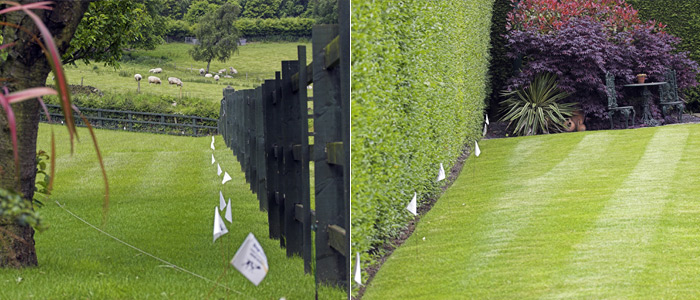
Visible boundary for the pet with flags.
Problem 3: My Dog is Barking Excessively at the Boundary!
- The Problem: Your dog might be frustrated by the boundary, barking at things outside it they can see but not reach, or barking in an attempt to alleviate the correction.
- The Solution:
- “Quiet” Command: Practise a “Quiet” command within the safe zone, rewarding calm behaviour.
- Distraction Management: If they are barking at external stimuli, try to reduce visibility (e.g., temporary screening along that section of the fence) or work on desensitisation training.
- Review Correction Level: Ensure the correction is not too low (leading to frustration) or too high (leading to anxiety-induced barking).
Benefits of Overcoming These Challenges: Why It Matters So Much
Successfully navigating these training challenges ensures your electronic dog fence truly becomes a cornerstone of your pet’s safety and well-being.
- Unparalleled Freedom: Your dog gains the freedom to roam and play safely within your property, enjoying fresh air and exercise without being tied up or confined to a small kennel.
- Your Peace of Mind: You gain the confidence that your dog is secure, preventing costly escapes, potential injuries from traffic, or distressing incidents like worrying livestock (a significant concern in rural UK).
- Stronger Bond: A well-trained dog is a happier dog, and successful training deepens the trust and understanding between you and your pet.
- Protection of Your Investment: Proper use and maintenance of your DogFence system ensures its longevity and effectiveness, protecting your initial investment.
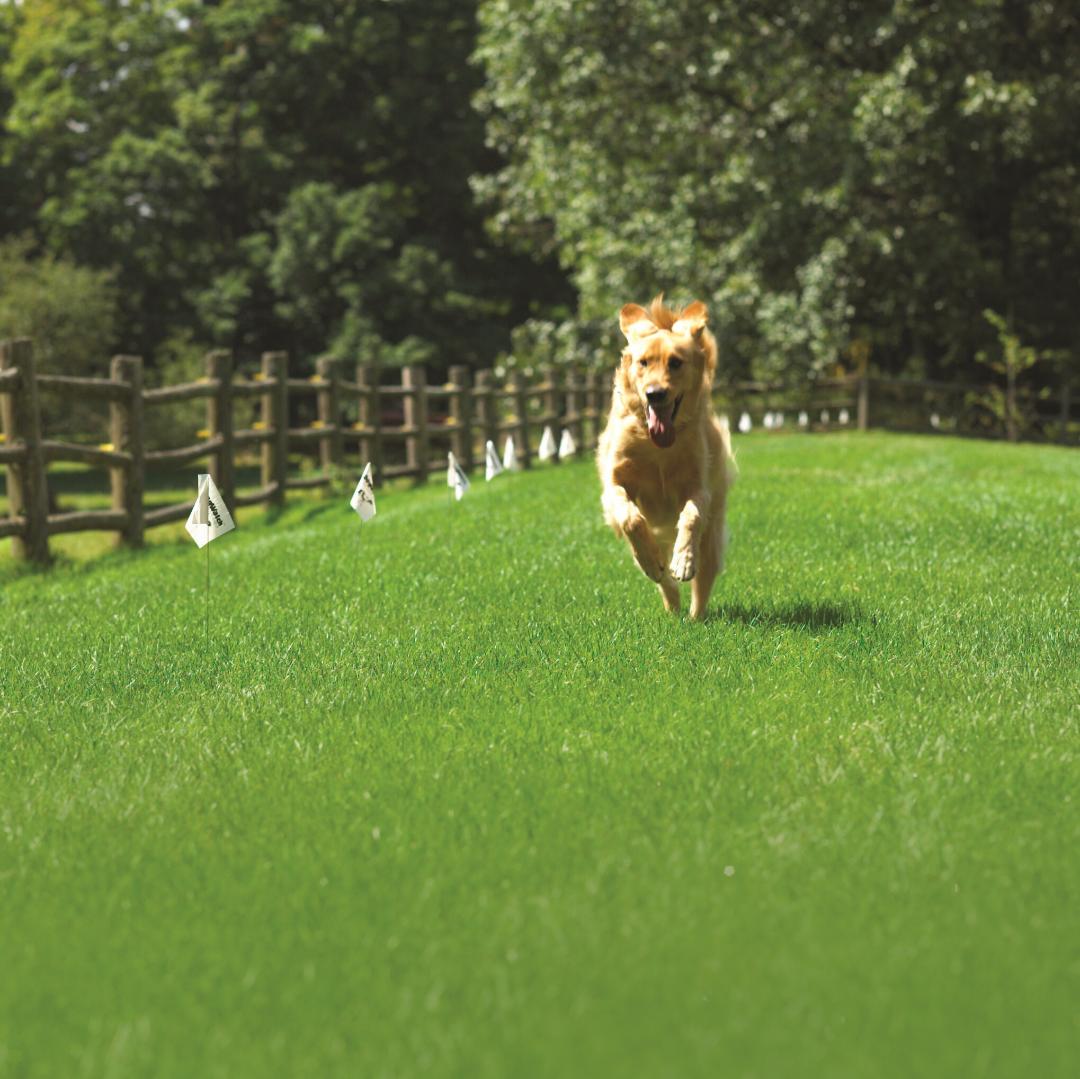
Freedom and Safety with an electronic dog fence
How DogFence UK Systems Aid in Training Success
While generic “invisible fence” systems might exist, DogFence UK prides itself on professional-grade technology designed with real-world scenarios and varying dog temperaments in mind. Our systems typically feature:
- Multiple, Adjustable Correction Levels: Allowing precise calibration for your dog’s sensitivity and drive, which is crucial for troubleshooting.
- Dedicated Training Support: We provide comprehensive guides and expert advice, recognising that the technology is only as good as the training behind it.
- Reliable Components: Our robust collars and transmitters are built for consistent performance, minimising failures that could undermine training.
- Lifetime Equipment Guarantees: Reflecting our confidence in the durability and reliability that supports long-term training success.
- Ready to invest in a reliable solution? View our full range of DogFence systems and find the perfect fit for your home and dog.
Frequently Asked Questions (FAQs) About Electronic Dog Fence Training
Q1: How long does it typically take to train a dog to an electronic fence?
A1: Most dogs understand the basics within 1-2 weeks of consistent training sessions (5-10 minutes, 3-5 times daily). However, achieving true “proofing” under distraction can take several weeks, depending on the dog’s temperament and your consistency.
Q2: Can I use an electronic fence on a very young puppy?
A2: It’s generally recommended to wait until a puppy is at least 4-6 months old, depending on their maturity and comprehension. They need to be old enough to understand cause and effect and adhere to basic verbal commands. Call DogFence first and we are happy to advise.
Q3: What if my dog seems completely unfazed by the correction?
A3: First, check the battery and collar fit. Ensure the contact points are making good contact with the skin. If it’s a thick-coated dog, you might need longer contact points. Then, gradually increase the correction level one step at a time, observing your dog’s reaction for the lowest effective setting. Some dogs are very stubborn or have high pain thresholds.
Q4: My dog got through once, will they keep doing it?
A4: Not necessarily. A single “run through” means your training needs reinforcement. Go back to basics, increase consistency, and potentially proof under distraction more intensely. It’s an opportunity to strengthen their understanding, not a sign of failure.
Q5: What if my dog ignores the warning tone?
A5: This usually means they haven’t learned to associate the tone with the flags and the correction. Go back to the initial flag training phase. Every time they hear the tone and experience the corretion, immediately guide them back into the safe zone, followed by the “careful” command.
When to Seek Professional Help
If you’ve diligently applied these troubleshooting tips, been consistent with your electronic dog fence training, and are still facing significant or persistent challenges, please don’t hesitate to reach out. Your DogFence UK team is always ready to offer personalised advice, system checks, or connect you with professional trainers who specialise in electronic fence integration. Sometimes, a fresh pair of eyes or a professional trainer’s guidance can make all the difference in achieving long-term success and peace of mind.
Don’t let training hurdles stand in the way of your dog’s freedom and safety. Need personalised advice or ready to upgrade your system?
Call us today on 01628 476475 or Request a Free Quote!

